A step-by-step guide to canning pickles in a water bath. An easy way to make dill pickles, sweet pickles, or pickled vegetables that last in the pantry for up to a year!
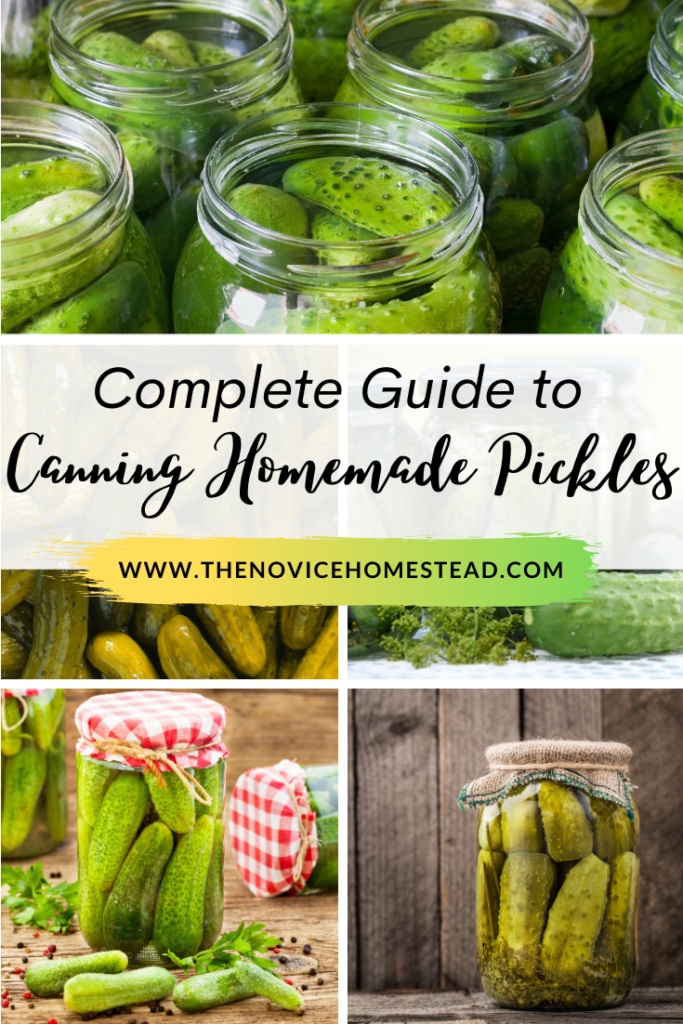
Making and preserving your own pickles is easier than you think! I use this method to make my Granny’s famous sweet pickles with my cucumber crop.
You can also use the water bath canning method to preserve dill pickles, or pickled vegetables (like these amazingly tangy pink pickled radishes!)
Pickles are one of the easiest and safest things to can, making it the perfect beginner project. You don’t need a pressure canner or expensive equipment — just jars, a pot, water and tongs!
Canning Supplies Needed
Note: We’ve included shop-able ad links to products we love and use; read our disclosure policy here.
- Large Stock Pot
- Canning Rack
- Mason Jars with Lids
- Canning Tongs
- Wide Mouth Funnel
TIP: This 3-piece canning essentials kit is the one pictured in this post. It’s a good starter kit if you want to try canning without a big investment.
What if I Don’t Have a Canning Rack?
Canning tools definitely make things easier, but are not absolutely necessary to get the job done. In fact, I made my very first batch of sweet pickles without any proper canning tools at all!
- In Place of a Canning Rack: Make a “snake” out of aluminum foil in the bottom of a large stock pot. You want to use coils of foil to keep the jars from touching the bottom of the pot or each other. Keep an eye on the jars closely while boiling, as foil will be less steady than a rack and you don’t want the jars to clank or tip.
- Instead of Jar Tongs: You can use regular tongs, but be extra careful! Metal tongs do not grip jars as well, and when filled, the jars will be heavy. Instead of metal tongs, consider scooping or dumping some of the water out of the pot, then grabbing the exposed jars with oven mitts.
Having tried both, I will say that it is easier if you have tools that are specific for canning. But it can be done!
What is Water Bath Canning?
Water bath canning in simplest terms is boiling food in jars to make it shelf stable. The boiling process heats up the jars, so that when they cool, it creates a vacuum seal to prevent air and bacteria from getting in and spoiling the food.
You should only use this method on acidic foods, such as pickles and fruit jams. Acidic foods are naturally resistant to bacteria growth, while non-acidic foods need higher temperatures and pressure to kill bacteria.
Again, the method I’m explaining in this post is specifically for canning pickled vegetables (including your standard cucumber pickles).
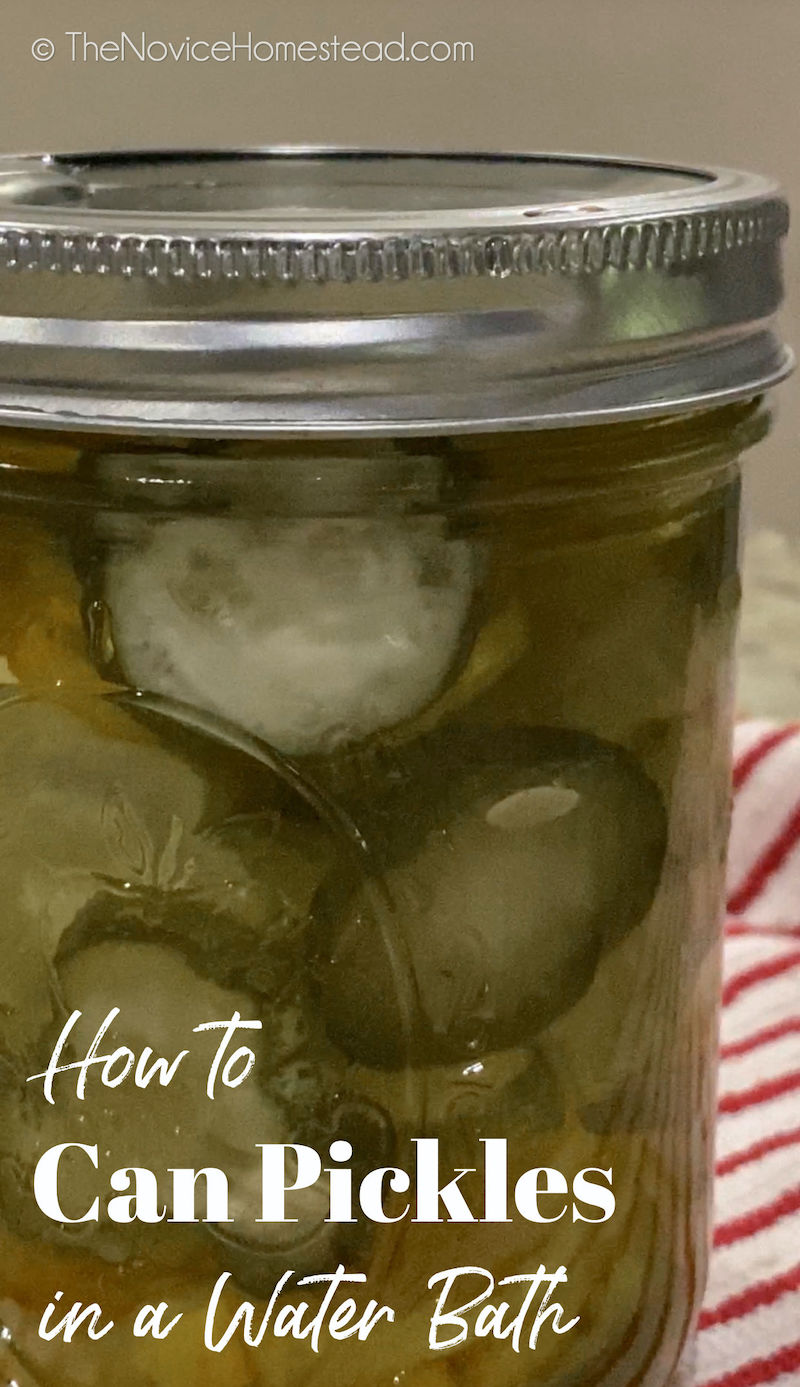
How to Can Pickles in a Water Bath
Place a canning rack in the bottom of your stock pot and fill with water. You’ll want the water level to be at least one inch over the tops of your jars once submerged.
While the water comes to a boil, wash and rinse your mason jars and lids. Even if they were brand new in-box, you never know what’s on them. Keep your jars warm until your pot of water is ready — this can take a while!
When your water is boiling, it’s time to fill your jars. A wide mouth funnel is really helpful here and prevents a big mess or spills.
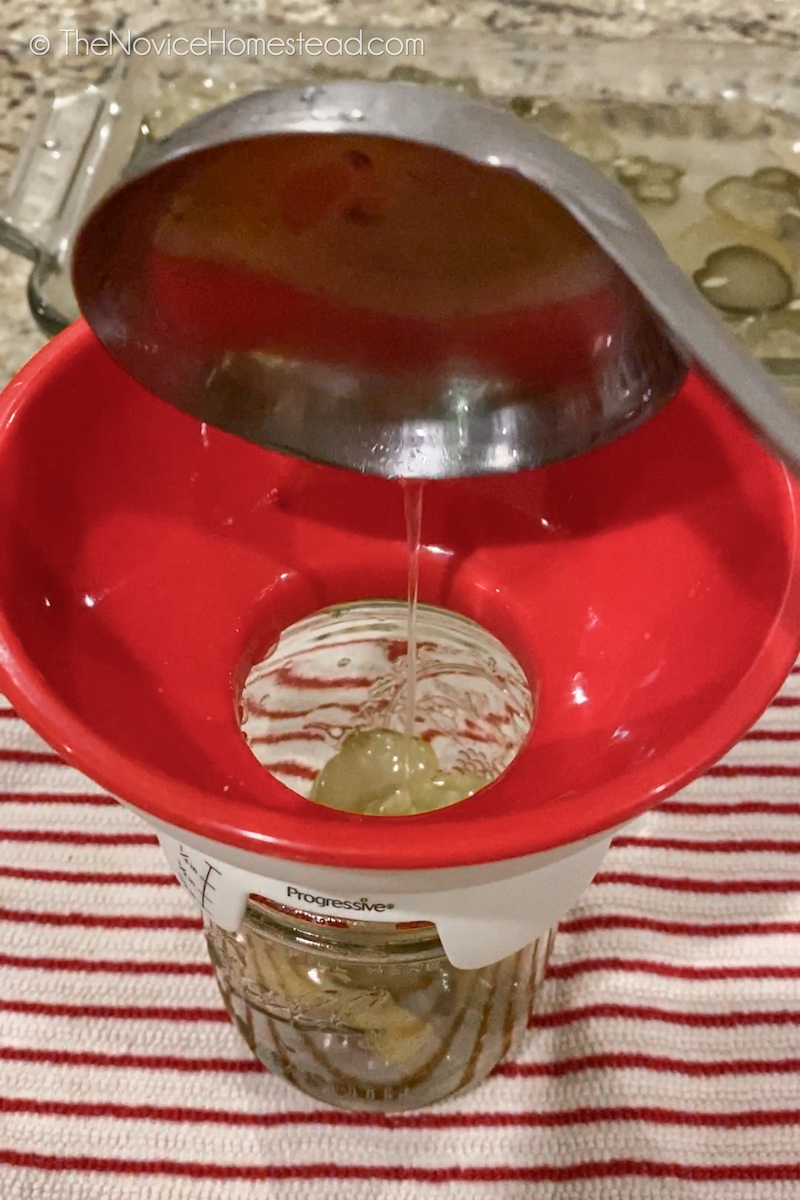
You want the jars to be filled up, with 1/4″ – 1/2″ of head space left at the top. Run a butter knife around the inside of the jar to release big air bubbles (some bubbles will remain, that’s ok). If needed, add a bit more pickle juice to get to 1/2″ from the rim of the jar.
Wipe down the rim of the jar with a wet cloth to get rid of any pickle juice that might prevent a proper seal.
Place the vacuum seal lid on top of the jar, then the screw ring. Do not tighten all the way! You want the ring to be tight enough so the lid stays put, but not so tight that air can’t escape during boiling.
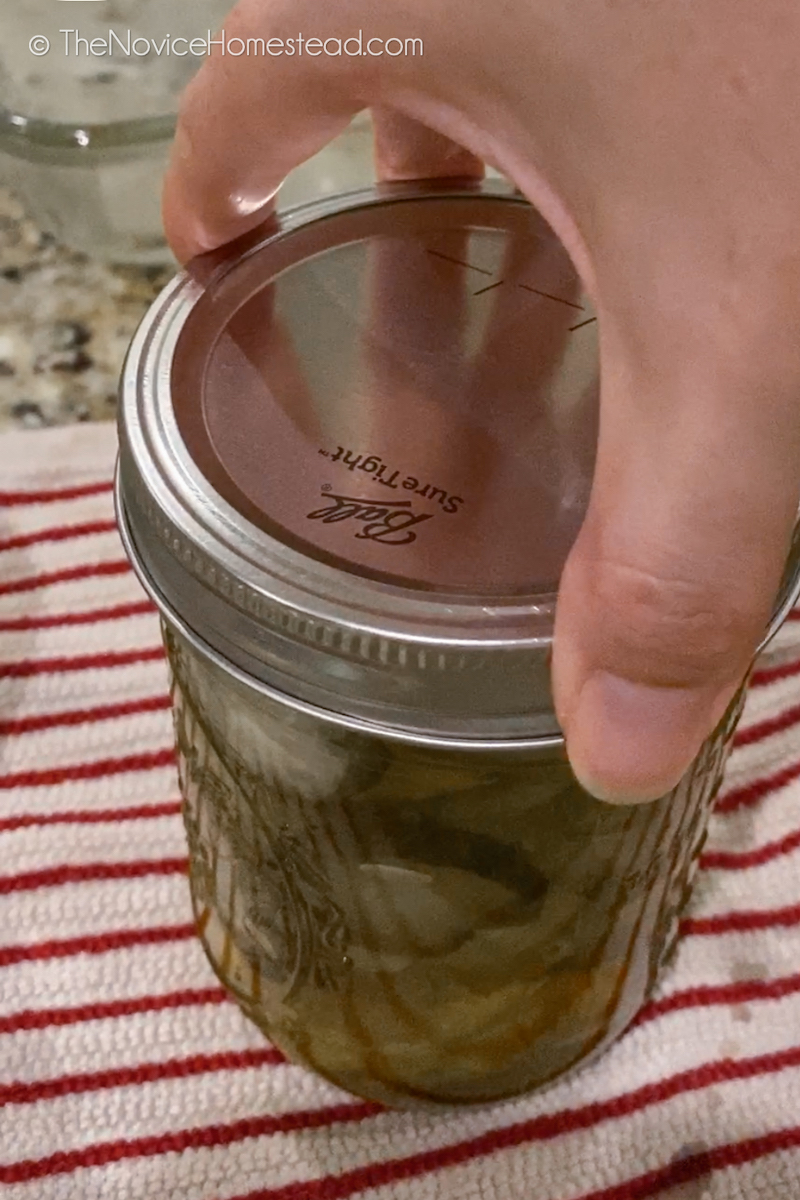
Use tongs to lower the empty jars into the pot, so that they are sitting on the canning rack. The jars should not touch the bottom or sides of the pot or each other.
Boil for 10-15 minutes. It doesn’t need to be a big rolling boil — that creates potential for jars banging around or not enough water coving the lids at any given time. A low steady boil is more than sufficient.
When time is up, turn off the heat and carefully remove the jars from the water.
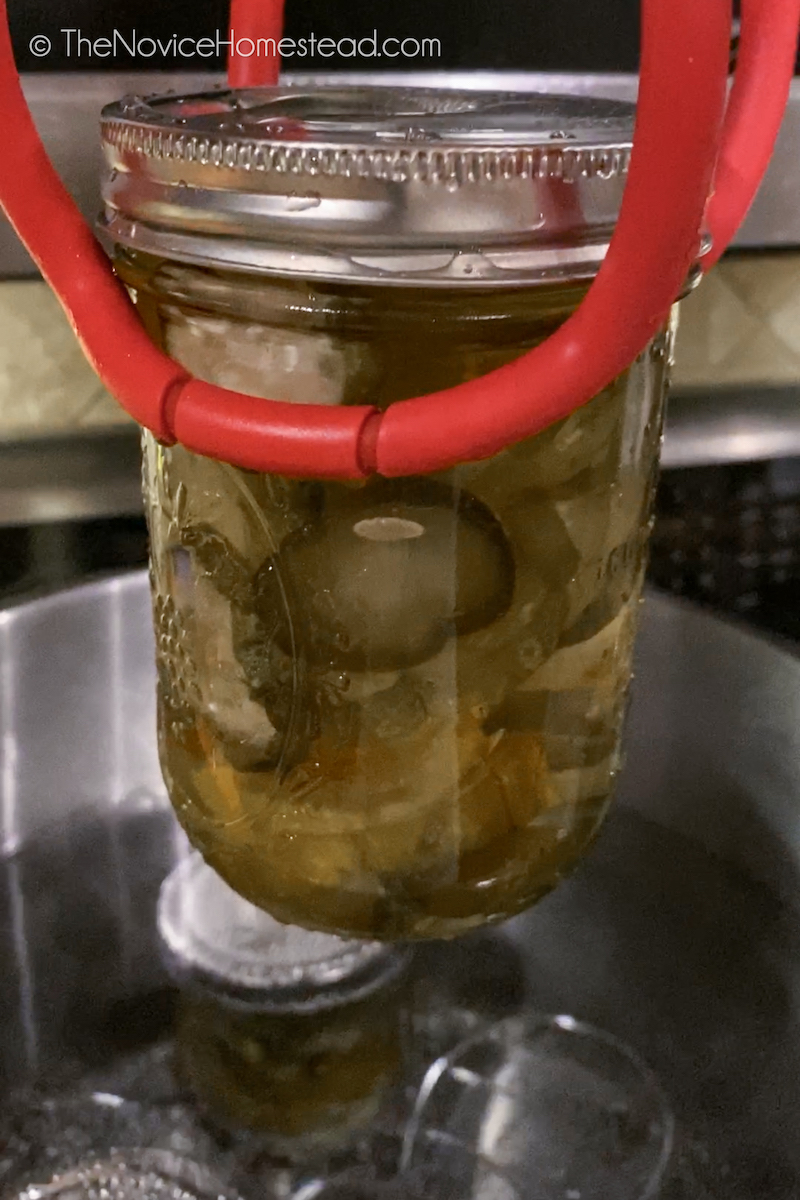
Do not place directly on a countertop or any cold or hard surface. The drastic difference in temperature could cause the jars to crack. Instead, use a dish towel folded in half as a buffer.
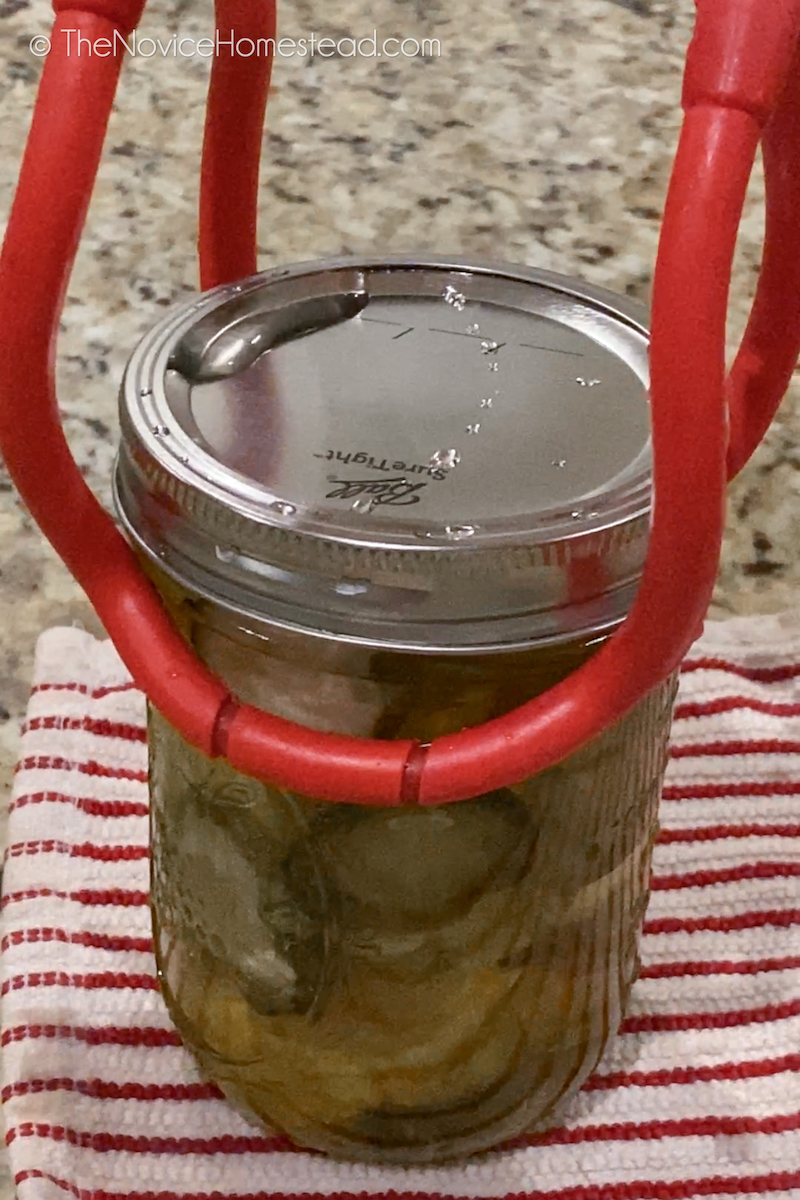
As the jars cool, you’ll start to hear the lids pop. This means that they’re sealing and are safe to store for up to a year. If after 15-20 minutes, you notice any of the jars don’t pop on their own, you can give them a gentle touch on the top of the lid and they should pop.
Other than a gentle check, do not disturb your jars for a full day. Give them time to cool down completely and make sure that they’ve sealed. Only after this resting time can you tighten the jar rings slightly, as needed.
Any jars that do not seal at this point should be kept in the fridge and used within a couple weeks.
Do You Need to Pre-Sterilize the Jars First?
I used to pre-sterilize my jars by boiling them for 10 minutes, but turns out that it is unnecessary in my situation…and may be for you too!
According to the National Center for Home Food Preservation, if your process time during canning is at least 10 minutes (at 0-1000ft altitude), then this alone is adequate for sterilization. You’ll need an additional minute of boiling time for every 1000 feet in altitude.
Since I live close to sea level and we boil the pickles for 10 minutes, there is no need to pre-sterilize the jars. All you have to do is wash and rinse before filling.
If you are at a higher altitude, you can just boil the pickles for as many extra minutes needed, up to 5 extra minutes. The pickles will be fine boiling for up to 15 minutes. Very high altitudes may want to go ahead and pre-sterilize first, to be safe.
Can You Reuse Mason Jars?
You can reuse mason jars again and again. You can also reuse the screw rings. However, you can NOT reuse the vacuum seal lids.
The good news is that you can buy the vacuum lids separately and just swap them out with each batch.
Is Canning Pickles Safe?
One of the biggest concerns with canning anything is botulism. Even though botulism poisoning is fairly uncommon, it can be quite serious.
The bacteria that causes botulism thrives in low oxygen environments — like a sealed can of food. Things that are low-acidity are especially susceptible.
On the other hand, a high-acidity environment, like the vinegar based pickling liquid, prevents the growth of botulism-causing spores.
As long as you’re washing your jars and lids before use and boiling for a sufficient amount of time, your pickles should be safe to eat.
How Long Do Pickles Last on the Shelf?
When processed in a water bath, homemade pickles should last up to a year if stored in a cool, dark place. A pantry is perfect.
Once opened, keep your pickles in the fridge. As long as the pickles themselves stay submerged in the brine, they can last a few months in the fridge.
If you notice any strange odors or signs of mold, discard them.
Related: How to Store Tomatoes so they Stay Fresh Longer
You might also like:
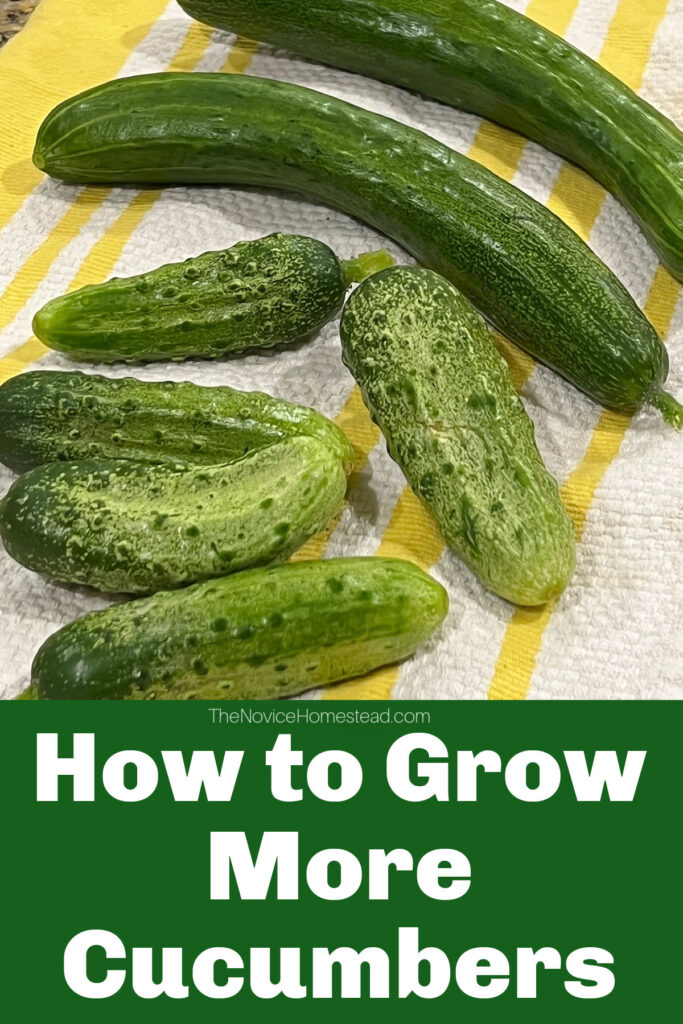
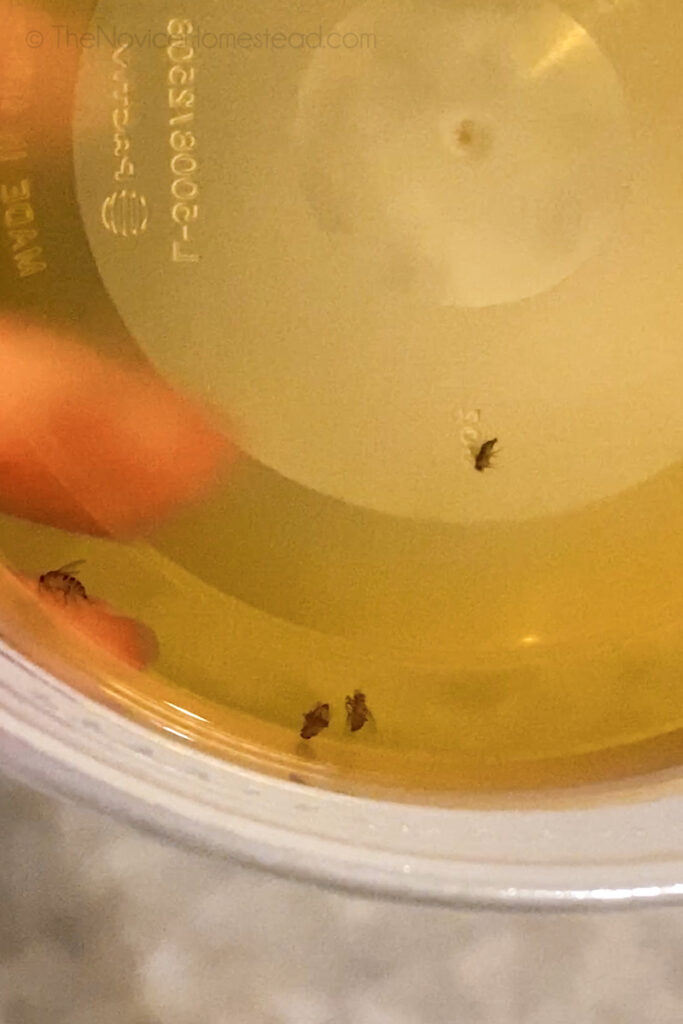
Don’t you mean full jars “ Use tongs to lower the empty jars into the pot…”?
I usually boil my jars first to sterilize. When it comes to canning, I lean on the side of caution.